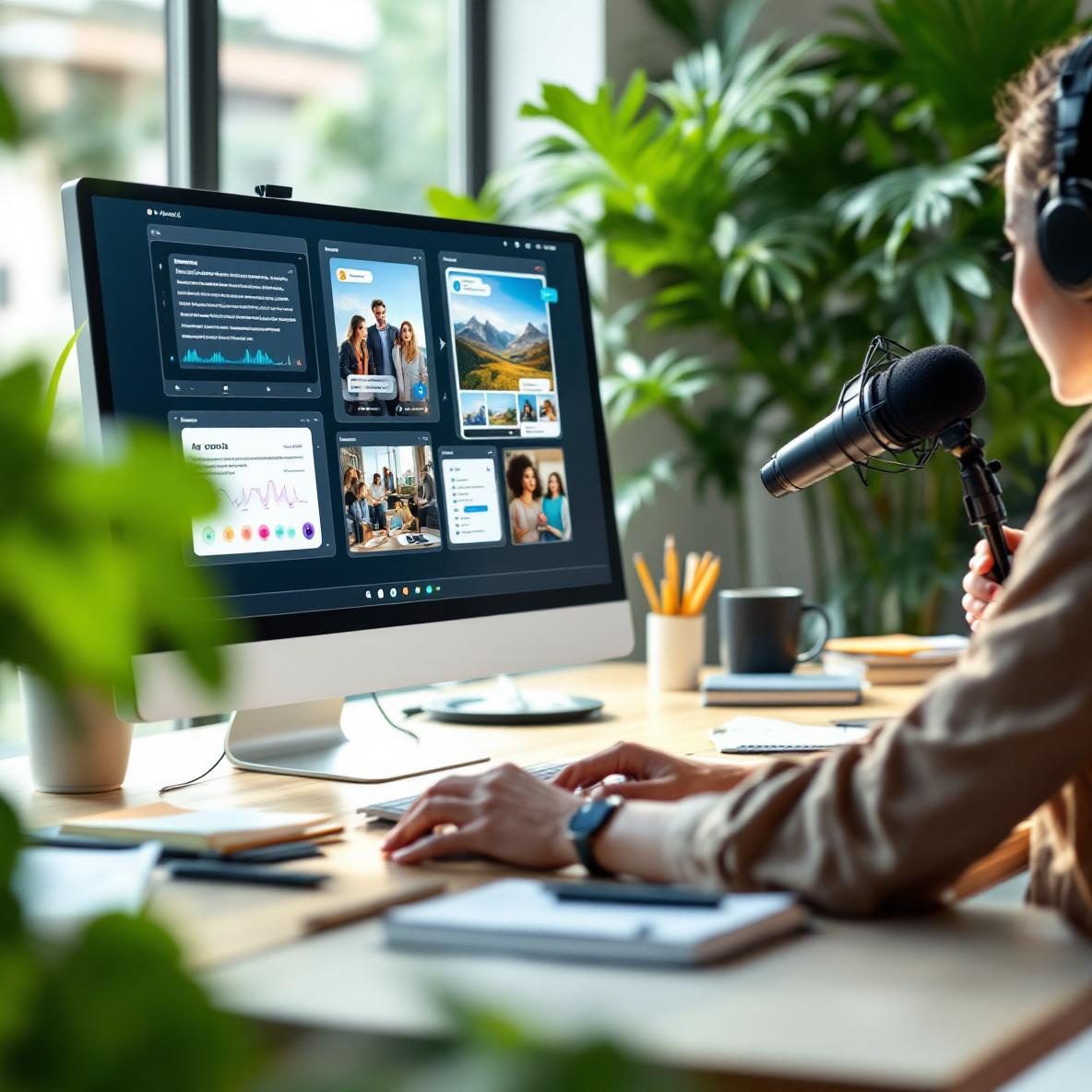What Are Multi-Modal AI Prompts
If a text prompt is like asking a question in a chat room, then a multi-modal prompt is like bringing a diagram, a song clip, and a handwritten note to that same conversation. Multi-modal prompts feed an AI model input that can include text (your usual questions or commands), images (photos, scanned documents, hand-drawn sketches), and audio (voice memos, recordings, sound effects).
Thank you for reading this post, don't forget to subscribe!Some people think multi-modal = fancy output like AI-generated pictures, but no — it’s more about giving richer, more natural input. Let’s unpack what this means in practice:
| Input Type | What You Can Do | Example Scenario |
|---|---|---|
| Text | Ask questions, give commands | “Summarize this article in 3 key points.” |
| Image | Describe, analyze, extract info | “What’s wrong with this Excel formula screenshot?” |
| Audio | Transcribe, interpret tone or intent | “What did the speaker emphasize in this clip?” |
What surprised me at first was how much more accurately an AI interpreted messy handwritten scrawl once I added a few lines of context in the text as backup. On their own, some images didn’t land—especially recipe cards written in cursive. But tossed in a sentence like “This is grandma’s pecan pie instructions,” and wham, everything made sense.
To sum up, multi-modal prompts effectively simulate how we naturally communicate with each other—words, pictures, tone—all at once.
Best Tools for Multi-Modal Input
There are a few AI tools that go beyond basic text chat and actually understand when you give them more than just words. But if you’ve only played with ChatGPT or Google Bard, you might not know which ones respond best depending on what *kind* of prompt you throw at them.
Here’s what I tested across several real-life scenarios, like uploading photos from a workshop whiteboard, audio notes from customer interviews, and mixed-text with image PDFs.
| Tool | Supports Text | Supports Images | Supports Audio | Test Highlights |
|---|---|---|---|---|
| ChatGPT (Pro) | Yes | Yes (with GPT-4V) | Yes (via Whisper API) | Recognized characters in messy scanned docs better than expected |
| Gemini | Yes | Yes | Yes (audio prompts in Android app) | Understood spoken questions quickly, but image analysis felt less precise |
| Claude | Yes | Partially (via documents or embedded links) | No native support | Did great with image-based PDFs but can’t directly process WAV/MP3 |
So, if you really want to use all three input types in a single go? ChatGPT Plus is currently the most seamless option, especially using the mobile app with voice.
The bottom line is: Don’t just pick the tool with the longest feature list. Try using each tool in the exact workflow where multi-input actually matters—like summarizing a team meeting with pictures of the board and a voice note of your takeaways.
Feeding Text and Images Together
This is where it gets fun and very unpredictable. When you combine a chunk of text and a visual together, you’re no longer just giving facts. You’re setting context — like giving an AI both a map and the directions.
Let’s take this example. I uploaded a photo of a spreadsheet with a formula error message to ChatGPT and added:
"This is supposed to total sales for each region. But it’s giving a spill error. What’s wrong here?"The AI responded well, identified that the =SUM() function was referencing a filtered range, and explained how Excel’s dynamic arrays were likely the issue. It even suggested turning off filter mode or using LET() to isolate affected cells.
But without that “This is supposed to…” part? It guessed sales vs expenses incorrectly. That tiny bit of text turned a generic image analyzer into a helpful assistant.
Another situation: I gave Gemini a photo of a product label and asked, “Is this FDA compliant for US food products?” The image showed serving sizes in metric only. Gemini flagged it instantly and even pulled the relevant regulatory phrasing. That said, it sometimes made up data when I tested blurry or partial labels.
Similar issue occurs if you feed it screenshots of browser plugins or extension manifests. That context isn’t always obvious from the image itself, but when I added a line like “This is the permissions file from a Chrome extension,” then Claude parsed it right and suggested changes like removing unnecessary host permissions. No such accuracy without that sentence.
Ultimately, combining concise descriptive text alongside your images consistently delivers more useful answers than either input alone can.
Using Audio to Alter Prompts Dynamically
Text is static. Audio carries intent. That’s where combining voice into prompts starts to make a difference. Especially if you’ve ever tried transcribing sticky-note-level ideas or unstructured customer recordings.
Feeding in an audio file directly doesn’t just turn it into text. Modern AI parses tone, pacing, stress, and even pauses. For instance, I uploaded a voice memo where I quickly rattled off three product deal-breakers. ChatGPT’s Whisper-based model not only transcribed it correctly, but in the next prompt, I asked: “Okay, write product descriptions that avoid these pain points.” And it followed through with zero re-explaining.
Compare that to if I’d just typed some bullet points (e.g., “too slow,” “bad UI”). The tone — frustration, breathiness, sarcasm — was entirely lost. And that tone subtly influenced how the AI responded.
This also happens when recording short user intents, like saying “I’m looking for a planner with no distractions.” Gemini responded with minimalistic tools without any nudging, whereas typed requests often drifted toward full productivity suites.
Overall, audio adds flavor and intention in ways that unlock much better alignment than pure text prompts.
Real Prompts Tested: Things That Worked (and Didn’t)
Instead of showing you sample prompts from tutorials, I’m throwing in actual prompt + input combinations I tested with mixed success.
| Inputs | Prompt | Result |
|---|---|---|
| Photo of a handwritten note | “Convert this into clean Markdown format.” | Worked fine but misread a few dashes as bullets |
| Zoom audio from webinar + slide screenshot | “Summarize speaker’s case study and include numbers from slide.” | Got percentages close but swapped customer names—needed clarification |
| Sketched database diagram (photo) | “Turn this into a PostgreSQL schema.” | Surprisingly accurate, except table naming needed optimization |
To sum up: multi-modal prompts aren’t magic, but they’re way more consistent when you treat them like teaching moments — explain your thought, give an example, and let the AI glue it together.






